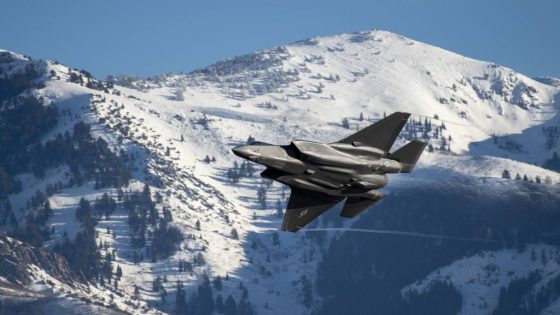A key design review for the F-35 fighter jet’s engine upgrade will take place several months later than originally predicted, as the government adds another level of review to the process.
An executive for Pratt & Whitney, the RTX-owned company that makes the jet’s F135 engines, told reporters Tuesday that the Engine Core Upgrade program’s preliminary design review is expected to take place in May 2024.
That is later than the company originally predicted last fall, when it said the review was scheduled for January 2024, about a month after the company expected to finish its preliminary design.
In a statement to Defense News on Friday, the F-35 Joint Program Office said the design review is “event driven” and has not been delayed, but that it is taking a closer look at the engine upgrade.
“We have added a senior-level engineering and technical review to the schedule, which will take place in the February/March time frame,” the JPO said. “The JPO, in conjunction with our industry partner [Pratt & Whitney], continues to mitigate risk as we work toward the PDR [preliminary design review].”
Pratt & Whitney spokesperson Heather Uberuaga said the Engine Core Upgrade program, or ECU, is on track, and referred follow-up questions to the JPO.
The program is intended to give the F-35 more power, thrust and cooling ability. That will be necessary for a wide-ranging slate of modernizations planned for the fighter, known as Block 4, which will allow the jet to carry more weapons as well as improve its targeting, electronic warfare capability and sensors.
The Pentagon considered creating an entirely new engine for the jet to provide the necessary thrust, power and cooling ability, but last year decided to instead keep and upgrade the F-35′s current Pratt & Whitney-made F135 engines.
Jen Latka, vice president for Pratt’s F135 program, also told reporters the company is on track to finish designing the engine upgrade in mid-2025 and start testing it the following year. The ECU’s critical design review is expected to take place next year as well.
This will allow the engine upgrade to be delivered in 2029, Latka said.
Pratt & Whitney executives have downplayed the potential danger of an extended continuing resolution on the ECU program’s long-term timeline. The top officer in charge of the F-35 program, Air Force Lt. Gen. Michael Schmidt, warned lawmakers in December that funding could run out for the engine upgrades within months if a 2024 budget isn’t passed.
Latka told reporters that passing a budget is critical for ECU and other programs, and an extended continuing resolution for a longer period of time would affect it. But, she added, it’s unlikely a longer continuing resolution would delay plans to have the engine upgrades fielded in 2029.
“There’s a lot of different pieces of design that are progressing at different rates right now,” Latka said. “We don’t have an exact date when the money runs out and the timer goes off.”
Latka said all versions of the F-35, including the “B” variant that has a tilting version of the engine so the fighter can hover, will use essentially the same core upgrade, although the configuration will differ for the F-35B.
Pratt & Whitney expects the process of swapping out the engine cores for all F-35s in the field will take about 18 months. Once the new engine core is ready, Latka said, the military’s own maintainers would be able to install it at depots or potentially on the flight line in a few shifts.
“It’s not a one-shift job, but it’s a fairly simple exercise,” Latka explained.
Pratt & Whitney is heavily using digital design techniques on the F135 upgrades, Latka added, which she predicted will save time and money as well as and improve the quality of the components going into the engine. The company is designing all parts with a digital model, she said, and once those digital blueprints are done, the firm will send them to suppliers to build.
The complete “digital thread” for each part will also help military services conduct preventive maintenance, Latka said. And Pratt & Whitney’s pitch for a next-generation adaptive propulsion engine will similarly use a fully digital process, she added.
Jill Albertelli, Pratt & Whitney’s president of military engines, also noted the company plans to test prototypes of its next-generation adaptive propulsion engine, which would go in the Air Force’s planned Next Generation Air Dominance fighter, in the late 2020s.
Stephen Losey is the air warfare reporter for Defense News. He previously covered leadership and personnel issues at Air Force Times, and the Pentagon, special operations and air warfare at Military.com. He has traveled to the Middle East to cover U.S. Air Force operations.
Source Agencies




